Review: Sharp FX
Jul 28, 2010, 11:30 AM by Eric M. Zeman
Sharp fields its first phone for AT&T. The FX is a quick messaging device that carries forward Sharp's messaging phone lineage, though it's not the sharpest knife in the messaging phone drawer.
Form
Is It Your Type?
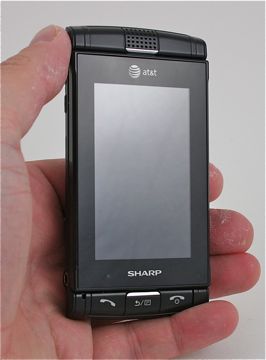
The Sharp FX is yet another quick messaging device (QMD) for AT&T. It brings a touchable user interface to the table, along with the requisite full QWERTY keyboard for typing. Its design language is eerily similar to the SideKicks of yesteryear, but in a decidedly smaller package. The other stand-out feature is, of course, the FX's ability to snag live mobile television. What does all that add up to? A device that's a jack of all trades, but master of none.
Body
The FX is a cross between the Sharp-made SideKicks and the Motorola-made SideKick Slide. It loses the trick, swing open screen that the SideKicks had, and instead uses a slider form to reveal the QWERTY keyboard underneath. Anyone who's ever held any sort of SideKick will immediately see the family resemblance. Too bad that includes the SideKick's faults, too.
Take the phone's size, for example. The length and width are fine, but the FX's depth makes it a bulky handset. It's also heavy. The sides and back are covered with a soft-touch paint job, which helps it feel smooth in your hand, but that doesn't take away from the girth. Fit and finish were also less fine than I'd like. The slider was very loose, and I noticed a lot of play in the top half of the phone. Loose parts don't inspire much confidence.
There are three physical buttons on the front of the FX, all placed below the display. There are Send, Back/Menu, and End/Power keys. All three have good travel and feedback, and are offset from the surrounding surface so that it is easy enough to find them.
The left side houses a volume toggle, microUSB port and 3.5mm headset jack. The volume toggle feels good and works well. I had no problems with the hatch covering the microUSB port. A 3.5mm headset jack is always nice to have.
On the right, you'll find the lock key and dedicated camera button. Both have excellent travel and feedback.
To get at the keyboard, slide open the FX and you'll find keys tucked in between two high shoulders on either side. Depending on how big your thumbs are and your own personal typing style, these shoulders may get in the way. I found them to be only slightly annoying, but not a deal-breaker.
The keyboard itself is comprised of four rows. Each key is shaped like a miniature mound and they each stand out enough to make them easy to find and use. The period and comma get their own keys, as does ".com." It's too bad that the FX doesn't throw a dedicated "www" or "@" key in the mix as well. You have to use the shift key to get at the "@" symbol. The keyboard also includes direction keys for on-screen navigation, though with the touch display, I barely made use of them other than for editing text.
The microSD port is buried under the battery cover, but thankfully not the battery itself. The back plate snaps off easily.
The Three S's
Screen
The FX has a 3-inch display with a miserly 240 x 400 pixels. Given the sheer volume of this device, the display is disappointingly small. It is surrounded by a huge bezel that makes it look tinier than it really is. Beyond the size, the pixel density just stinks. Everything has ragged edges and looks hazy. Last, brightness is abysmal. Set to maximum brightness, it just barely gets the job done indoors. Forget about using it outside. Fighting reflections, glare and grime is a losing battle.
Signal
Signal, as reported by the bars at the top of the phone, ranged all over the place. It swung wildly from zero to 5 to 3 to 1 to 4 to 2 bars as I walked around my house. Taking it to the basement killed the signal entirely (though other AT&T devices fare just fine down there). How did that affect phone calls? The FX has some trouble connecting calls. I was forced to re-dial a handful of calls that simply never went through. The FX never dropped a call, however. As far as data goes, browsing speeds were inconsistent. Sometimes it was fast, sometimes it was slow.
Sound
Call quality was as inconsistent as the signal. At times calls were crystal clear, and other times they were an indecipherable mess. I noticed static from time to time, as well as a digitized or artificial rendering of voices in the earpiece. Volume of the earpiece was acceptable for most indoor uses, but loud coffee shops, bars, or city streets will make for trouble. I'd prefer a louder earpiece. Similarly, the speakerphone is good for indoor use with no problems. You'll have to take care to leave the FX on its side or front, however, as the speaker is placed on the back and will be muffled if laid flat. Ringers and alert tones were reasonably loud, but again I would have preferred them to be louder.
Battery
Battery life was fairly decent for the FX. With normal use, I was able to get through two full days with charge to spare. That included some calls, some email and messaging, and some browsing. Watch some mobile TV, however, and the battery drains very quickly. I was able to kill off a full charge in just over two hours of TV time. Ouch. Better bring a charger if you want to watch TV on the go.
Touch
The FX has a capacitive touch screen. The phone is very slow to react to any input whatsoever. I would argue that this has more to do with the processor and memory resource of the device than with the touch panel. I never had to double-press anything, and presses were registered accurately, but it just took a while for the FX to figure out what to do once I'd tapped the screen.
Basics
Menus
The Sharp FX uses a proprietary touch menu. The home screen is tricky to get used to. It has four permanent icons at the bottom for the phone, main menu, contacts and the iSkoot Social Net application. Many touch phones on the market allow users to swipe between home screens to get at more content. The FX is different.
Similar to the way d-pads can be customized to launch certain applications, the FX's home screen will launch apps when swiped in certain directions. For example, swipe up to launch the Social Net app, or to the left to launch the browser. It's a neat idea, but for regular users of touch phones, it is maddening. Rather than take you to a new menu screen, accidental swipes launch slow-loading applications that you are then forced to quit. It's something you might get used to over time, except....
The main menu is laid out in grid fashion. There are three main menu pages, and these you really do swipe left and right to access. This inconsistency with respect to the home screen can make for a confused user.
The settings menu lets you make some adjustments to the phone's behavior (placement of the clock, for example), but you're mostly stuck with what you get out of the box.
The Back/Menu key will bring up a task switcher when pressed and held. This lets you jump quickly to one of six other apps. What stinks is these are pre-defined by Sharp and/or AT&T, so you can't add your own to the list of fast-access apps.
The one thing I'll say in the FX's favor is that there are almost no folders. Nearly all the apps are laid out in the main menu. This means you don't have to dig too far to find stuff, and that helps speed up performing some tasks on the device. The exceptions are the MyStuff (user photos, videos, ringtones and wallpapers), Apps, and Games folders, each of which is explanatory enough.
The home screen menu changes when the phone is opened. It prioritizes apps that require use of the keyboard and offers shortcuts to the Email, SMS, IM, and Social Net apps, for example. If you want to get at apps other than messaging services, you have to choose the "More" option, which takes you to an annoying list of applications and tools rather than the nice grid that's available when the FX is closed.
Calls/Contacts
Calls
Making phone calls with the FX is fairly straight forward. Thanks to the physical Send key, the call log is but a quick press away. The call log has four tabs at the top, which can be used to sort between All, Received, Dialed, and Missed calls. Each call record includes the typical time/date stamp, and a green software button to the right of the info. Press that button to call the number back. Press anywhere else on the call record to open up more information about it, including options such as replying via text message. One thing you can't do from the call log? Dial phone numbers. It's not an option from the call log app. Weird.
To actually dial a number, you have to press the Phone icon on the home screen. The software keypad works well enough for dialing numbers, and thankfully you can jump to the call log from the dialer if you want. Once you've entered the numbers to place a call, an options menu lets you do things like save the number, add it to existing contacts, see the calling history for just that number, send it a SMS message, or copy it to the clipboard.
Calls may also be dialed from the numeric keys on the physical QWERTY keyboard. This only works when you're looking at the FX home screen, however.
Contacts
The contact app is fairly typical of an AT&T feature phone. It can be opened from the home screen icon, or through the dialer/call-log apps. Contacts are displayed in a long, alphabetical list. Want to sort through them quickly? Start typing, and the FX will search the list as you type. It doesn't take more than a few characters for the FX to figure out who you want to find.
The FX allows users to create groups, speed dial lists, and manage contacts via AT&T's back-up service. Thankfully AT&T offers the back-up service for free.
The main contact screen is contextual. For example, when the phone is closed and held in portrait mode, a green software button appears next to each contact and permits for quick dialing. Alternately, when the phone is open and held in landscape orientation, the green software button doesn't make phone calls, but instead opens the text messaging application. That's a nice touch for an otherwise run-of-the-mill contact app.
Messaging
The FX's targeted demographic is messaging-crazed users. Does it provide all that they need? Almost. Email, IM, SMS/MMS, and some limited social networking are on board. Let's see how they each measure up.
First, SMS/MMS. Messages are arranged in a conversational, threaded format with colored bubbles differentiating the sent/received messages. Composing messages is a little awkward because there are two panels that need to be filled in for each message: the recipient and the message itself. The default action when you open a new message is not to add the recipient first, but to create the content. I prefer it the other way around, but that's just me.
Each message can be enriched with picture, video and audio content. These all appear in-line with the other messages, including microscopic thumbnails of the content. You have to open each individual text message to get a better view of whatever was attached. Messages can be grouped together and deleted in batches, which is convenient for those who need to dump their message history in a jiffy.
The email client is bare bones and works with POP3 and IMAP4 email systems. I had no trouble adding a Yahoo account to the FX, but it's unbelievably lame that AT&T charges $5 a month to access email. For a messaging device, email should be included in the data package. Weak sauce, AT&T, weak sauce.
The FX also comes with support for AIM, Windows Live and Yahoo Messenger for the IM-addicted. It is the same client that AT&T has used on its feature phones for a long time. It works well enough, and each network can handle multiple conversations, though the clunky user interface makes it a chore.
Want to hit up Facebook? The FX has a dedicated menu shortcut to the Facebook mobile web site. This is functional, but only barely so. It is a meager experience at best, and frustrating at worst. The FX is also preloaded with AT&T's Social Net software. This client lets users bundle Facebook, Twitter, and MySpace content into a single spot. It's not good for much more than posting status updates, though, and reading through a stream of what your friends are up to. There are no advanced social networking features to speak of.
It's obvious that AT&T is drawing a line between what QMDs can do and what its more advanced smartphones can do with it comes to social networking. I don't see why the QMD crowd continually gets the short stick.
Extras
Music
The FX has a capable music player and the usual slew of AT&T-branded music applications. The branded apps include AT&T's Music Store, AT&T Radio (streamed, not FM broadcast), Music Videos and access to some music applications. The AT&T Radio worked fine, though I much prefer Pandora or Slacker. The Music ID app portends to help identify tracks, but it was only about 50% accurate for me. The Music Video app offers clips of music videos, but I didn't find the selection of artists all that compelling.
As for the music player itself, it handles the basics just fine. Sorting through playlists and playing music was a snap. The player offers barely any advanced features. There are a number of preset equalizers from which to choose, but there are no user-adjustable options. Aside from shuffle and repeat, that's about it.
Music sounds weak coming through the tinny speaker on the back. You'll be much better off using your own favorite stereo headphones. With my Shures, music sounded pretty good.
Music via stereo Bluetooth didn't turn out so well. It worked, but only barely (sound cut in and out), and sound quality was miserable.
Camera
Camera
The FX has a 2 megapixel camera. It launches quickly once the dedicated camera key is pressed. It has a square box that floats in the center of the viewfinder to help you frame your shot, but the FX does not have autofocus. The options are limited. Users can adjust white balance, resolution, picture quality, image effects (sepia, B&W, etc), and add frames. That's about it. The FX will zoom, but only if the resolution is set to lower than the full 2 megapixels.
Using the FX outdoors as a camera is nearly impossible due to the screen's lack of visibility. Still, I was able to compose some shots and fire them off. The shutter responds surprisingly fast, in less than a second. The FX then processes the image and presents users with the usual send/trash/return-to-camera options. I hate that you have to press the little return-to-camera button to take another shot. On many other phones, you can press the shutter button again to skip the review screen, or just wait a second or two for it to go back automatically.
The sharing options are limited to sending via MMS or uploading it to AT&T's Online Locker, which costs money. Why no email or Facebook option?
Gallery
The FX gallery app offers no advanced features of any kind. It presents images in two separate libraries: Images stored on the SD card, and images stored on the phone's internal memory. Each lists images in a single column with miniature thumbnails rather than in a grid. Pressing any image will open it in the full screen. When the FX is closed, images automatically display in portrait mode, with thick black bars above and below each image. If you want to view pictures in landscape mode, you have to either open the phone or press a software button to manually rotate the slide show app. That's just awkward and completely unintuitive.
As far as editing goes, the FX has nothing. Users can delete, send, or rename picture files. That's about it. You can zoom in while looking at images, but you cannot crop them nor rotate them. The FX has one of the more limited camera and gallery apps I've seen in recent memory.
Photos/Video
Photos
With just 2 megapixels, I wasn't expecting much from the FX and my expectations were met. The FX did a fine job of handling white balance, exposure, and color in most outdoor and well-lit situations. The problem is the sheer amount of grain and noise that's present in the images. There's a lot of it. The FX also loses a lot of the fine details in images.
Indoor shots were even worse. Grain city. Images looked like they'd been sprinkled with sand. Since the FX doesn't have a flash, all you can do is snap away and hope for the best. It's a shame that good pictures are rarer than the bad ones. I imagine teens won't have any problem sending one another picture messages, but I would avoid sharing them via Facebook, Flickr, or anywhere else.
Video
The FX's video talents are reminiscent of those from the first video phones back in the early 2000s. Sure, it captures video, and sometimes you might get lucky and have something usable. But most of the time it's a mess. Grain, odd waviness, lighting inconsistencies and blown-out exposure all over the place.
I'd be surprised if videos taken with the FX even make it to a multimedia message.

3GPP / MPEG-4 format (viewable with QuickTime)
Browse/Customize
Browser
The FX has a version of the Polaris browser on board. You want to know how long web pages take (on average) to load? Here was a typical experience. I would open the browser. The display would go to sleep before the AT&T home page opened. I'd wake the display back up and have to unlock the phone. The FX would still be loading the home page. The home page would suddenly pop up all at once. Then I'd choose to enter a URL and visit a web site. While waiting for that new site to load, the display would go to sleep, forcing me to wake the phone back up and unlock it. The punchline? I have the display set to sleep after 2 minutes.
The end result is a miserable, awful, horrible browsing experience. The FX can't decide if it wants to show WAP sites, mobile sites, or HTML sites, as all three make appearances from time to time. Anything more than WAP, however, just flat-out kills the FX.
Truly one of the worst browsing experiences I can recall on a mobile phone since the EDGE and 1X days.
Customize
The FX offers only modest customization at best. Sure, you can set your own wallpapers, ringtones, alerts, caller ID, etc. Themes are limited to "white" or "black." The menu style can't be rearranged, the home screen and main menu are pretty much stuck the way they are. The AT&T bloatware is unremovable, and 81MB of on-board memory doesn't leave users with a lot of space.
Extras
Apps
The FX has access to AT&T's MEdiaMall applications. These are mostly ringtones, wallpapers, screen savers and stuff like that, though a few legit apps are in there as well. Games are found in the MEdiaMall, too. The phone has an Apps Center, which is the MEdiaMall storefront. Then there's an Applications folder and a Games folder. Why these are broken out separately is beyond me, as the apps folder also has the games, and the games folder also has the apps.
Bluetooth
The FX supports mono and stereo Bluetooth headsets. I was able to pair with both kinds easily. Sound quality through mono headsets for phone calls was miserable. Sound quality through stereo headphones for music was also cruddy. The sound cut in and out, and there was a lot of hiss. The FX also pairs with other phones, and can pass files such as pictures and videos back and forth without too much trouble.
Clock
One of the few things users can customize on the FX's home screen is the clock. It can be moved around (up and down), and there are two different digital clocks and one analog clock. Any of them are easy to read if you want to check the time quickly, but you do have to unlock the FX first.
Mobile TV
The FX is the second Mobile TV-capable device to hit the market form AT&T in recent weeks. The Mobile TV service, which costs an extra $10 per month, offers live television (not streamed) from a handful of channels. That includes prime-time content and stuff from the likes of ABC, CBS, NBC, Nickelodeon, CNN, ESPN and others. The selection of content isn't bad, but Hulu Prime is better. There's a decent guide to help users sort through shows and content, and changing channels is surprisingly quick.
AT&T Mobile TV might be worth it for TV addicts if not for the crappy screen and battery-life issues. The low-rez screen really nixes the appeal for me, and you can't watch it for any length of time without worrying about an early death for your battery.
Wrap-Up
The QMD lineup at AT&T is a puzzling mix. They all have QWERTY keyboards, and some have touch screens as well. The FX falls into this latter category. I suppose the primary target for QMDs — tweens and teens — might like the SMS/MMS and IM capabilities, and not care much about the weak (and costly) email support.
I have a harder time believing that same demographic is going to be as happy about the limited support for social networks, such as Twitter, Facebook and MySpace. Yes, they'll be able to read what their friends are up to and post their own updates, but the real interactivity of social networks is missing here.
The phone also fails at a lot of the basics. Phone calls were inconsistent, data speeds were slow, and the screen was just not competitive.
The camera produces fair pictures, but offers no frills whatsoever (perhaps it is a good thing there's no native Facebook picture support?). The video camera is so bad it is almost not worth using.
The music player works fine, though it, too, has no advanced features. The web browser is downright awful, one of the slowest I've ever used.
Still, there are some redeeming qualities to the FX. It has a good keyboard, and battery life is decent if you don't watch any mobile TV. It may a bit big, and the slider a bit loose, but otherwise the hardware controls work well.
For my money, the $99 price tag makes the FX a no-go. AT&T offers a wide range of QMDs for free, or much cheaper than the FX's price tag.
Comments
Should have put Android on it


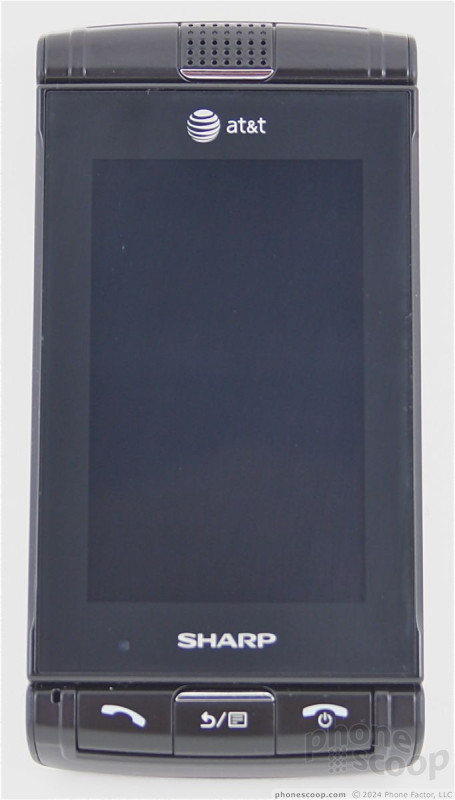








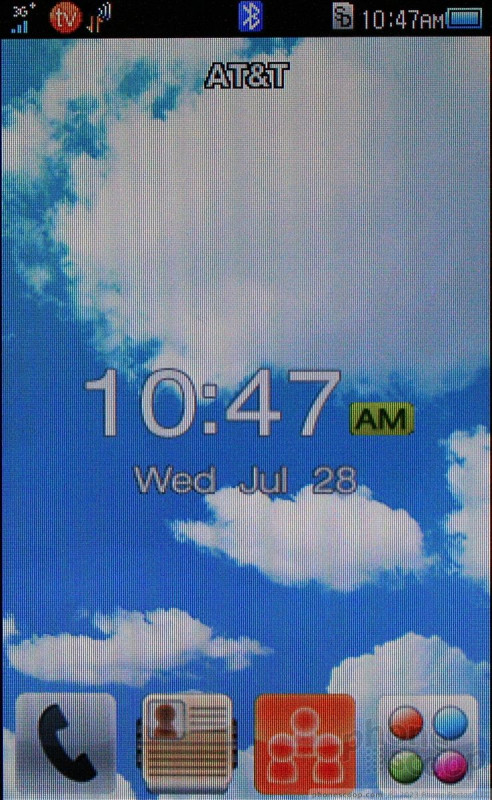






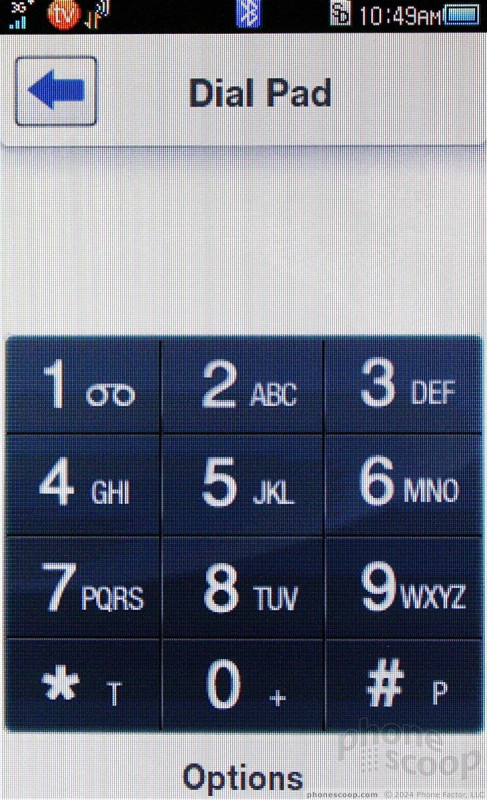





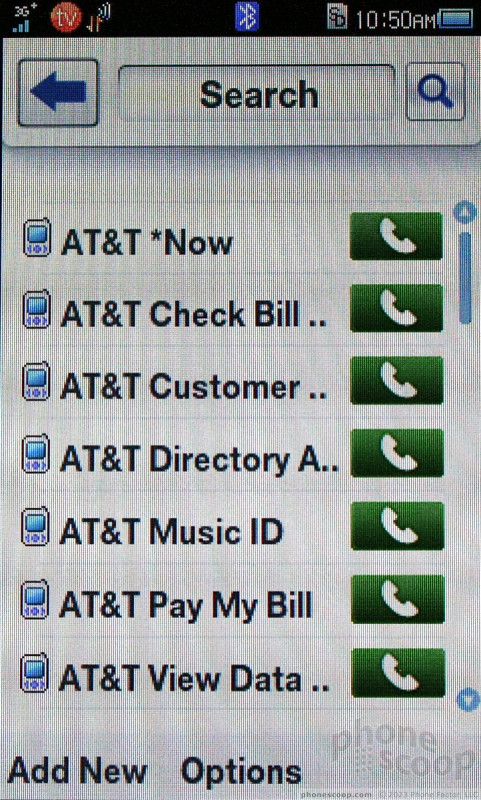




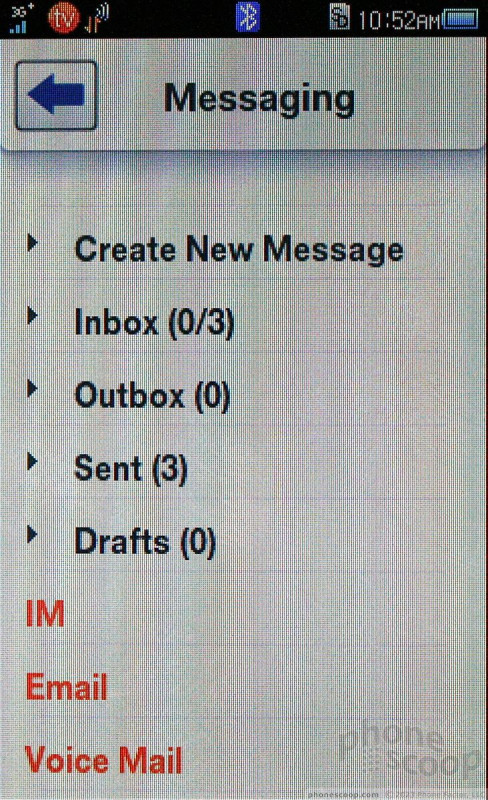






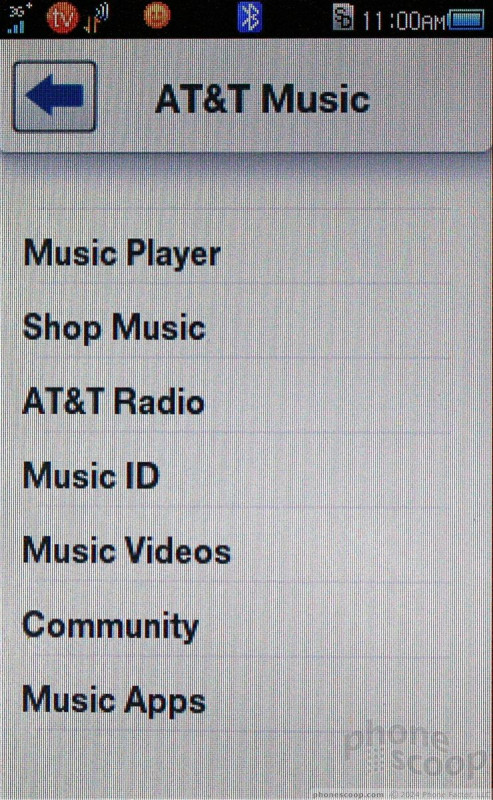




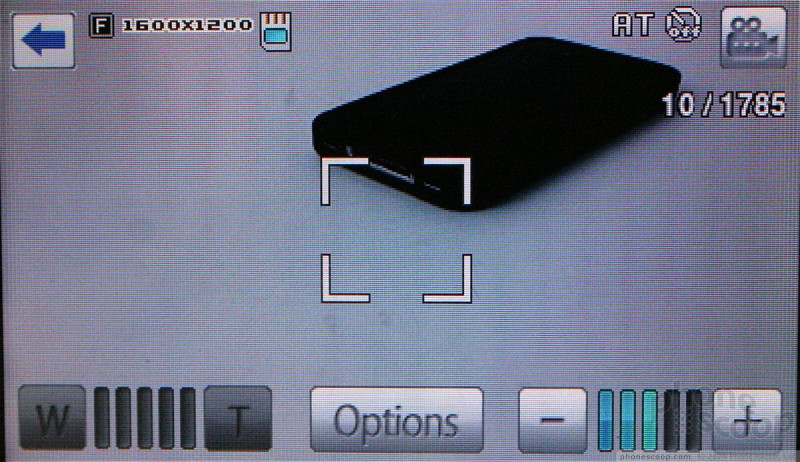



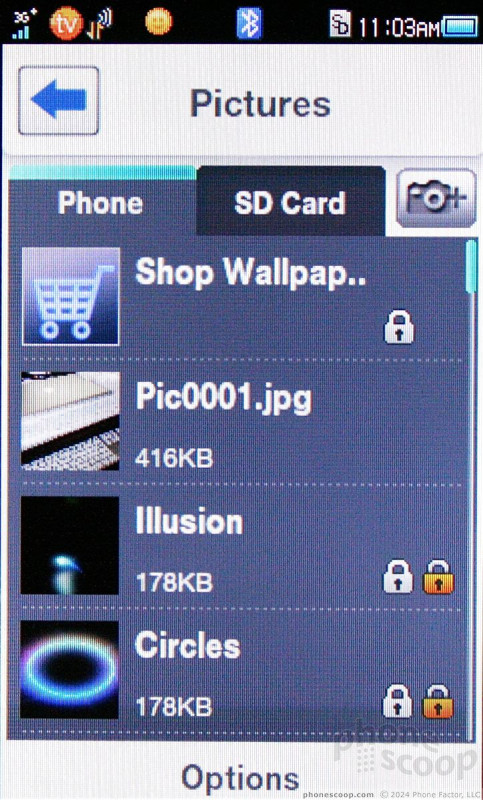



















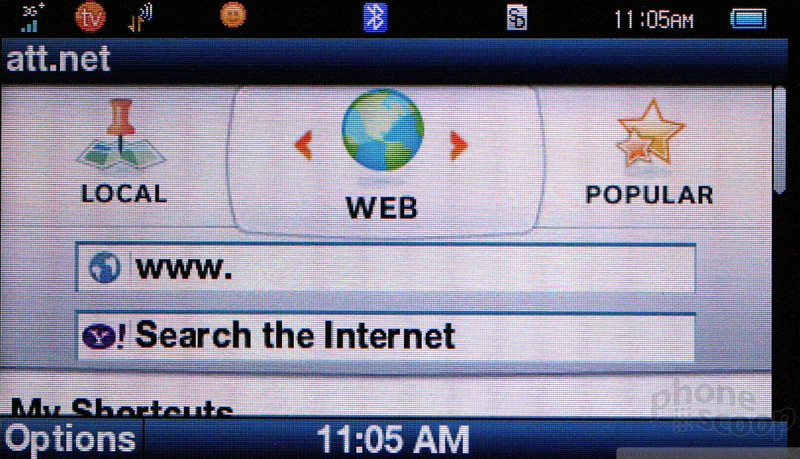





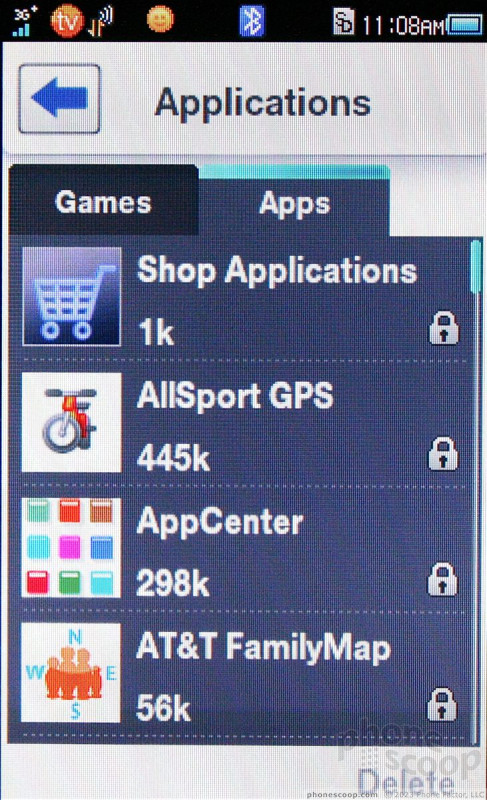



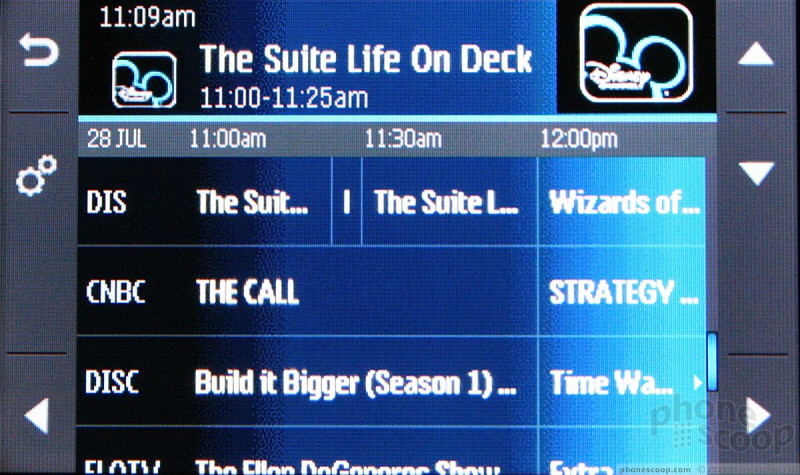



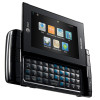 AT&T Adds Sharp FX to Quick Messaging Phone Lineup
AT&T Adds Sharp FX to Quick Messaging Phone Lineup
 Android 12 Sports New, Customizable Look
Android 12 Sports New, Customizable Look
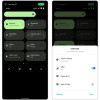 Android 12 Beta 2 Brings New Internet, Privacy Controls
Android 12 Beta 2 Brings New Internet, Privacy Controls
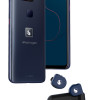 New Asus Phone for Snapdragon Fans Showcases Qualcomm Tech
New Asus Phone for Snapdragon Fans Showcases Qualcomm Tech
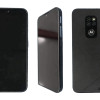 Motorola Defy is the First Fruit of the Company's Partnership with Bullitt
Motorola Defy is the First Fruit of the Company's Partnership with Bullitt
 Sharp FX
Sharp FX



